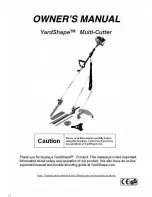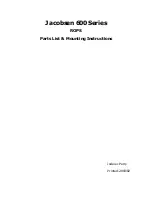
OPERATION
Form # 169089
28
Model Year - 2010
6.12.7 Forming Shields
WARNING
Keep everyone several hundred feet away
from your operation. Ensure bystanders
are never in line with the front or rear of the
machine. Stones or other foreign objects
can be ejected from either end with force.
The position of the forming shields controls the
width and placement of the windrow. The
decision on forming shield position should be
based on the following factors:
x
weather conditions (rain, sun, humidity,
wind)
x
type and yield of crop
x
drying time available
x
method of processing (bales, silage, "green-
feed")
A wider windrow will generally dry faster and
more evenly, resulting in less protein loss. Fast
drying is especially important in areas where the
weather allows only a few days to cut and bale.
Refer to Section 6.13, Haying Tips, for more
information.
Where weather conditions permit or when drying
is not critical, for example, when cutting for
silage or "green-feed", a narrower windrow may
be preferred for ease of pick-up.
NOTE
The forming shields are not required when
using a grass seed header.
6.12.7.1 Side
Deflectors
The position of the side forming shields controls
the width and placement of the windrow.
DANGER
Stop engine and remove key from ignition
before leaving operator's seat for any
reason. A child or even a pet could engage
an idling machine.
a. Set forming shield side deflectors to desired
width by repositioning adjuster bars (A) in holes
in forming shield cover. To ensure windrow
placement is centered, adjust both side
deflectors to the same position.
b. If forming shield attachment is too tight or too
loose, tighten or loosen nut (B) as required.
B
BOTH SIDES
A
















































